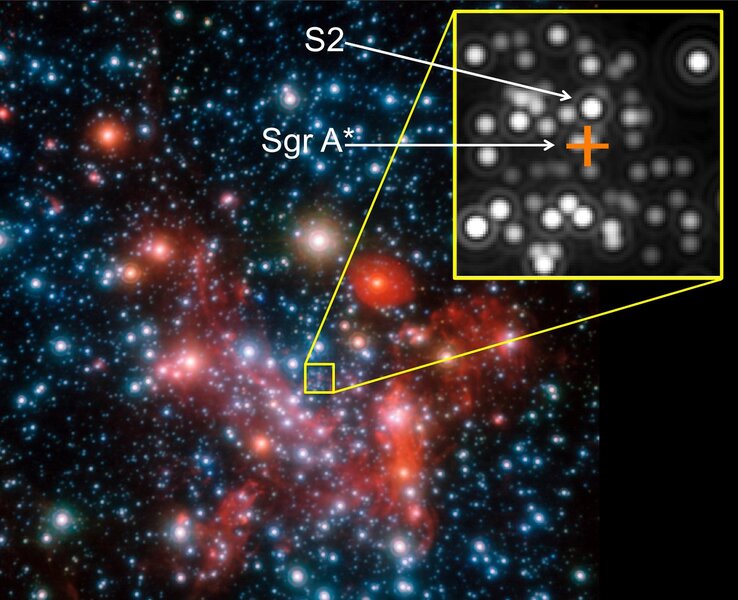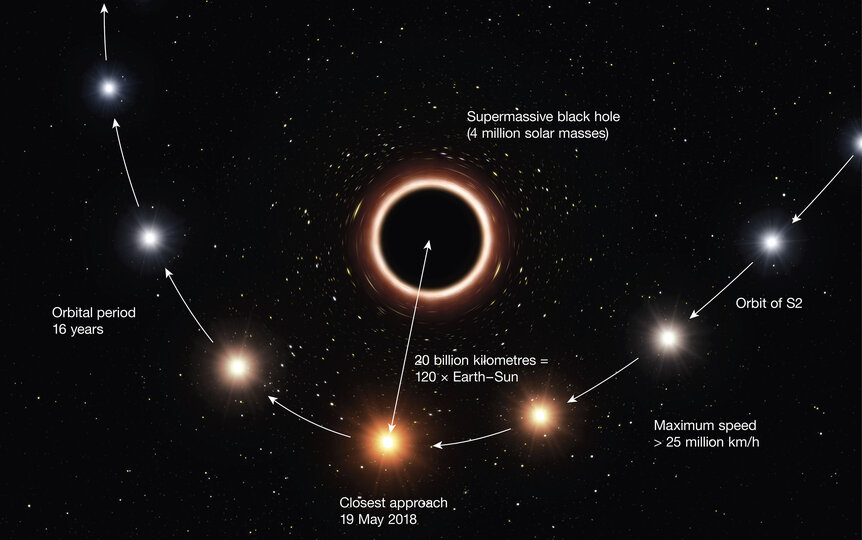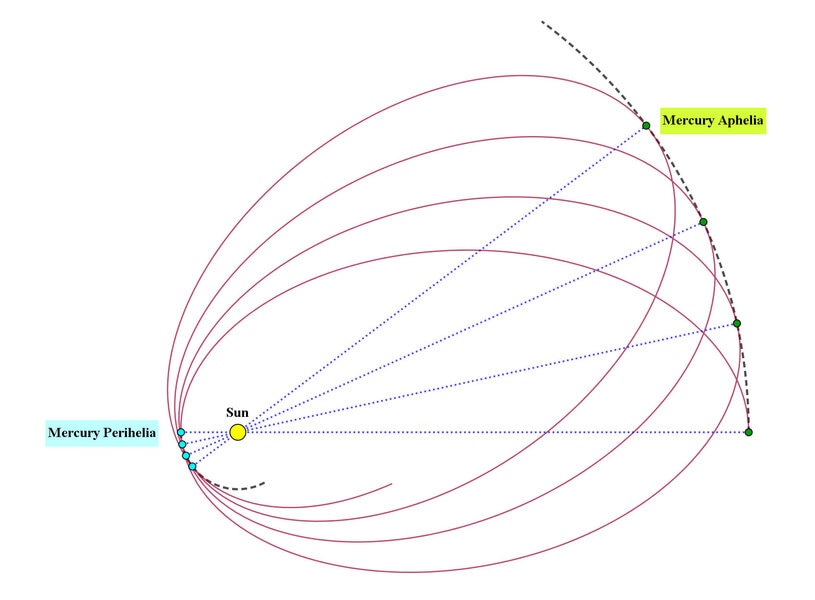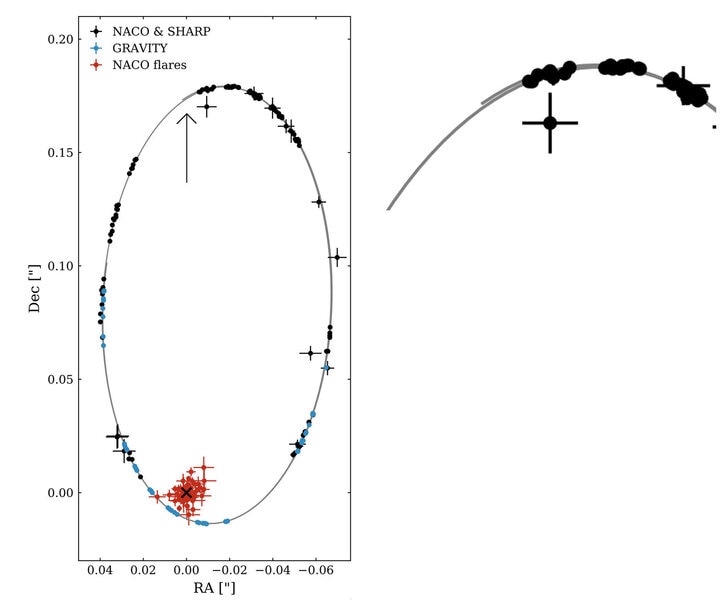Create a free profile to get unlimited access to exclusive videos, sweepstakes, and more!
Einstein's hand reaches out from a black hole and torques a star's orbit
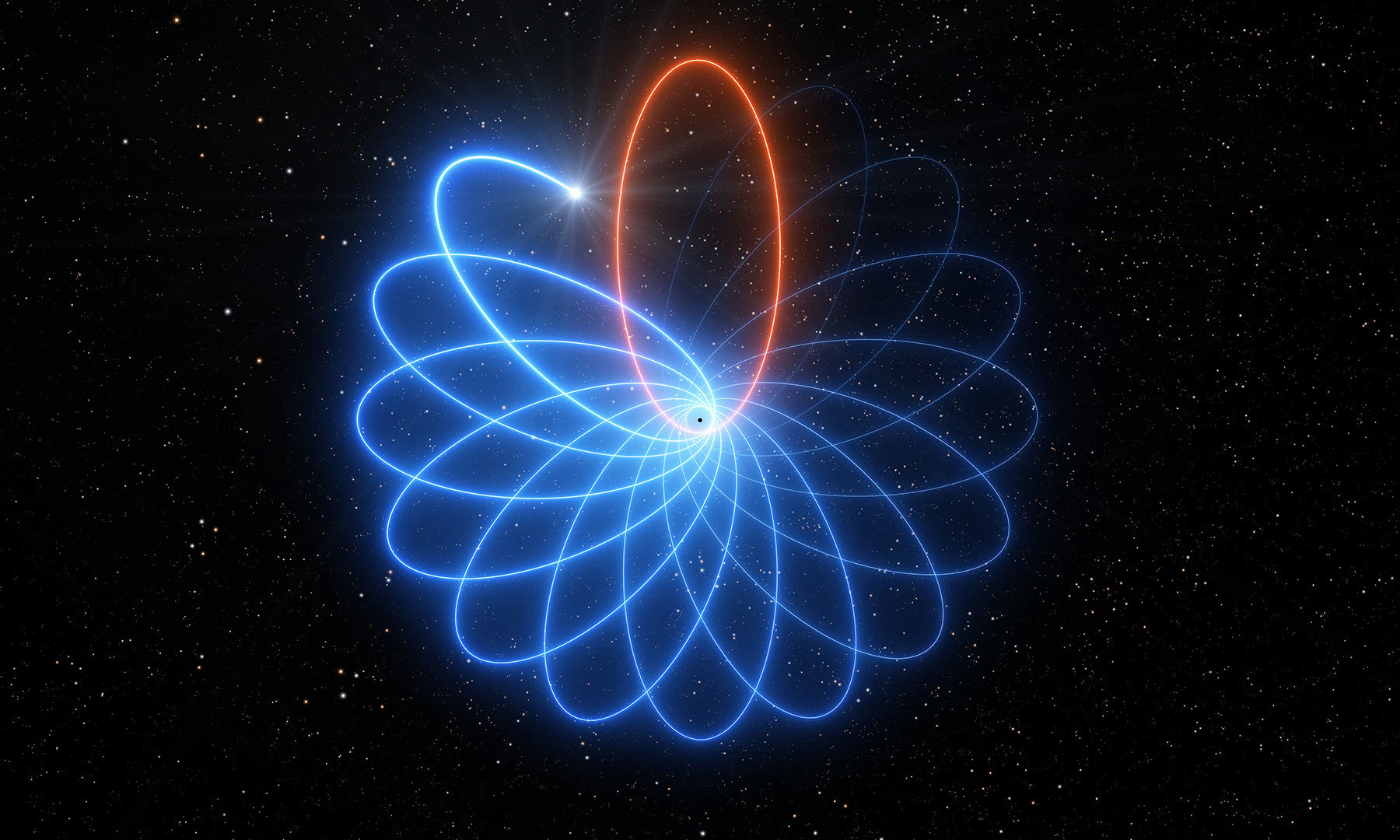
I have some cool news for you here, and it means I get to write this awesome line:
After plunging down to within 18 billion kilometers of the supermassive black hole in the center of our galaxy, a hot star's orbit got dragged into a different configuration due to the black hole's distortion of spacetime around it… just as Einstein predicted.
Heh. That was fun.
I've been waiting to hear this news since 2018 (a lot of the back story is in that article, so you should read it). That's when astronomers started prepping to point the Very Large Telescope toward the center of the Milky Way, where a 4 million solar mass black hole sits. Called Sgr A* (literally "Sagittarius A-star"), it's surrounded by a cluster of hot, massive stars that orbit it. One of these stars, called S2, is on a highly elliptical orbit that takes about 15 years to complete.
On May 19, 2018, S2's orbit dropped it down to about 18 billion kilometers from the black hole, where the fierce gravity of Sgr A* accelerated it to a staggering 7,700 kilometers per second. That's fast enough to cross the continental United States in less than one tick of a clock's second hand… and mind you, this star has a mass about 10-15 times that of the Sun, too. That's a lot of star moving at tremendous speed.
Highly-detailed observations of the star before and after passing the black hole confirmed one effect predicted by Einstein's General Theory of Relativity: The light from the star was redshifted, losing energy as it fought its way out of the intense gravitational field of the black hole. It was a big success.
But wait! There's more!
Another prediction of relativity is that the orientation of the orbit should change too. Imagine an ellipse representing the stars orbit, with the long axis cutting across the black hole and touching the star at closest approach. That axis points in a certain direction, has a certain angle on the sky, defining the orientation of the orbit. For the Earth orbiting the Sun, say, that direction doesn't change.
But if you orbit a very massive body and get close to it, it will. This is called orbital precession, and one outcome of relativity is that due to the way a massive body distorts spacetime by curving it, an object getting close enough to it will have a measurable precession in its orbit. Mind you, we already knew this is true: Mercury's orbit around the Sun precesses due to this effect, though it's very small.
What astronomers hoped is that their observations pre- and post- closest approach would show this orbital precession for S2… and they did! By carefully measuring the position of the star over time, they found that the orbital precessed by about 1/5th of a degree.
It's not a huge change, all things considered, but it's there, and it's measurable, and it’s just what is predicted by the equations of relativity. Astronomers have been tracking this star for many years now, and this is the first time the precession has been seen.
In the image above the orbit of the star is shown as a solid line (individual observations are the dots), and at the upper left you can see the last orbit doesn't quite overlap the present one. In technical terms we say the orbit isn't closed. Given enough time, say 10 or 20 orbits, you'd be able to see the star tracking a rosette pattern like a flower instead of a single ellipse. That's the precession due to four million Suns worth of black hole warping space around it.
Esoteric? Sure. Weird? Certainly! But important? Absolutely. It shows yet again that Einstein's equations of how spacetime and mass work are right. We know this — that same math is tested a million times every time an accelerator slams subatomic particles together, or even when you use your GPS to get directions — but this is a test under pretty extreme conditions.
It also tells us about the environment around the black hole. For example, if there were another object inside S2’s orbit close to Sgr A*, like say another black hole, it would have to have a mass less than 1000 times the Sun’s or else its influence would have been detected in the measurements.
Unfortunately, the 15-year orbital period of S2 means this opportunity doesn’t come up very often. But astronomers just found another star there, called S62, on an elliptical orbit that takes it to a hair-raising distance of just 2.8 billion kilometers from Sgr A* — that's closer than Uranus is to the Sun! Even better, the orbit is just ten years long, so we don't have to wait as long between passes. The problem is the star is much fainter and more difficult to observe, but it's possible (perhaps with James Webb Space Telescope) that future observations of it can get even better numbers.
It's reassuring to know that Einstein passes even this test. And, in a way, it's reassuring to know that black holes are weird, even in specific and technical ways. Everything about them is so mind-stretching… even in what should be the simple situation of them sitting there while a star orbits around.
